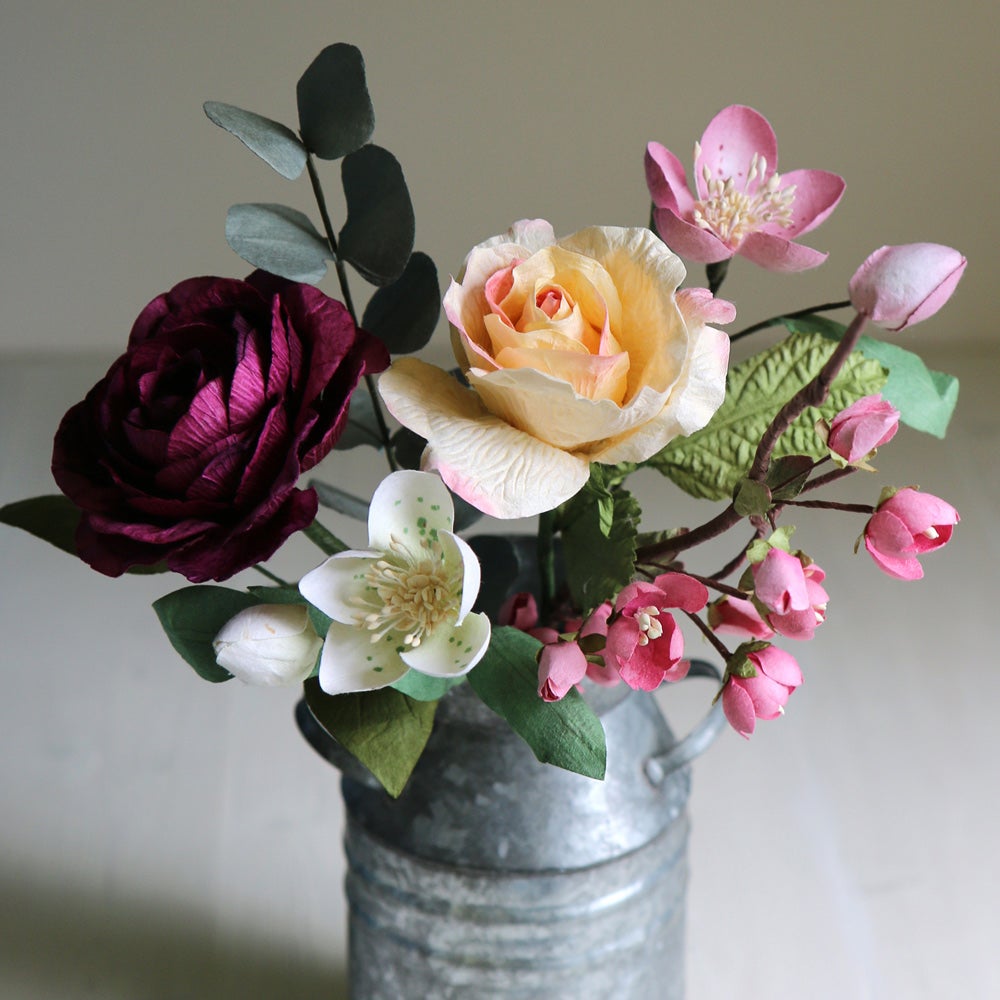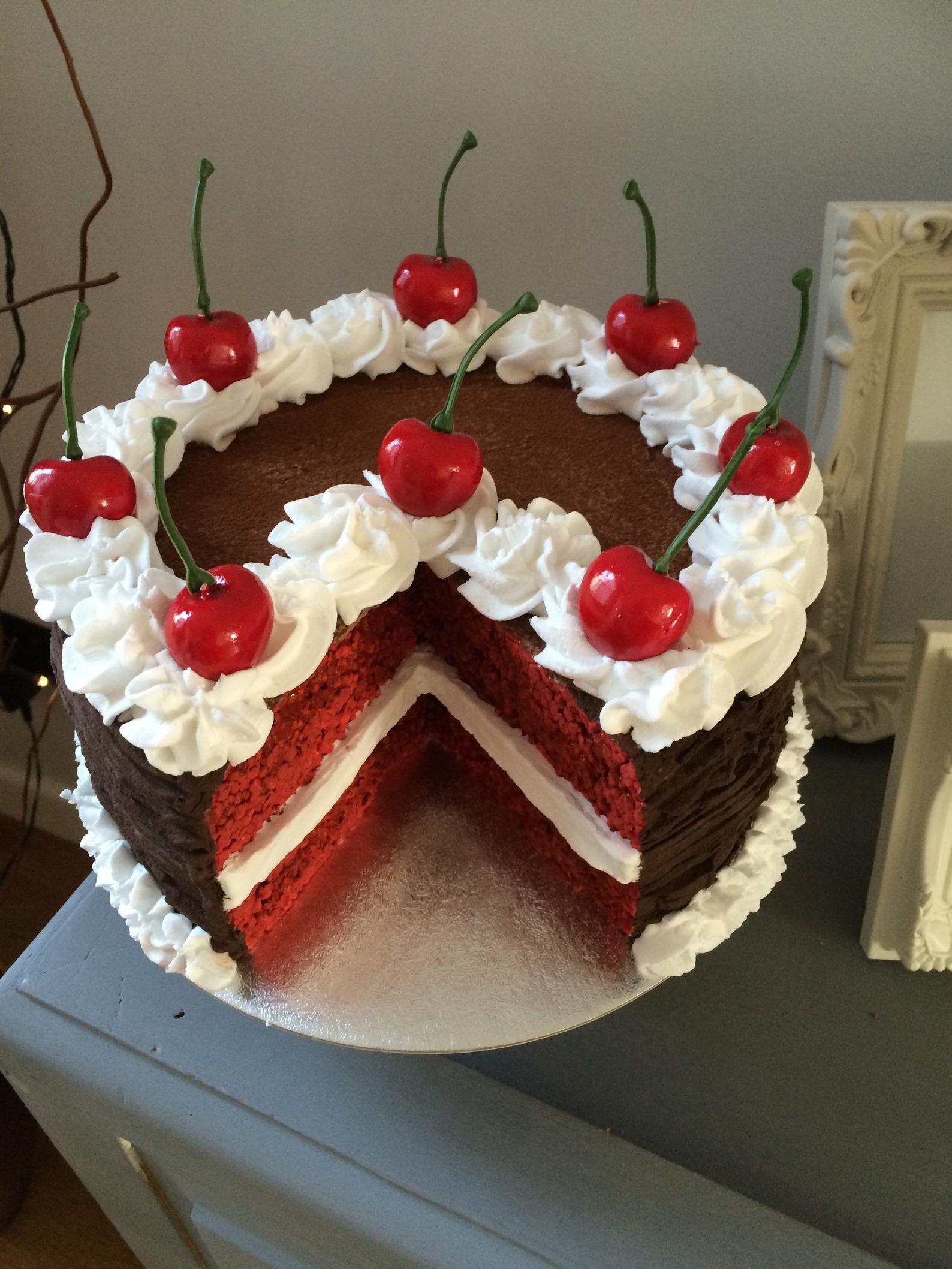Crochet Bananas & Paper Flowers: Why Fake Homeware Is Having A Moment
Photos Courtesy of @amygemmelldesign, @prettyshittycakes, @wonky_picnic & @leo__flowers.
The pandemic has been a big time for homeware. Since we can't leave our spaces and aren't moving if we can help it, people have sought decorative changes to keep the same four walls feeling fresh. That could be with new soft furnishings, rearranging corners or injecting some energy with organic, living or edible objects. A carefully iced cake adds decadence to a tablescape; a steadily stocked fruit bowl can bring colour to an otherwise bland kitchen countertop; flowers, whether dried or fresh, bring life and light to dull corners and rarely unoccupied workspaces. It has always been the case that in some form, organic objects are decorative touches to our living spaces.
AdvertisementADVERTISEMENT
But in recent months, the homeware space has welcomed fakery. Fruit bowls overflow with crocheted bananas and grapes; inedible cakes hang suspended from walls; furry mushrooms sit on side tables; windowsills are dotted with knitted cacti; vases are filled with colourful paper flowers.
The 'living' decorative object of today is fake. It knows it, and it wants us to know it too.
Fake decorative objects, at first glance, are purely functional. The organic pieces we decorate our homes with are not cheap – fresh flowers need to be replenished and come at a significant cost, while fruit, vegetables and baked goods are destined to be consumed at some point or thrown out when they begin to decay. Instead of curating a space with something that will wilt or rot away, fake fruit, flowers and cakes can last forever.
This desire to not be limited by an item’s shelf life is what drove Nadia, the creator of @wonky_picnic, to create her crocheted fruit. "Crochet has been a daily hobby of mine for the past 10 years so when the lockdown began I decided to challenge myself to see if I could create patterns that would as closely resemble the real deal! I’ve always been drawn to fruit aesthetically, but by their very nature they have a short shelf life, so I wanted to create a fake fruit bowl that was playful and tactile."
Daisy runs A South London Makers Market on Instagram where she works with some of the platform's most exciting small homeware and fashion brands. As part of that work she identifies 'fake' items as a key trend that’s been on the rise since 2020. "We've definitely seen a rise over the last year in small makers creating, and consumers buying, objects that are deliberately fake! It's really exploded." She likewise attributes this to wanting to decorate without the constant maintenance. "I think this whole concept plays into a couple of trends we've seen really take off at the market, the first of which is the desire to have beautiful things in our home that stay looking beautiful forever! Personally, I want every room to look lovely but I don't necessarily want to put the effort into maintaining endless bowls of fruit, bunches of flowers and plants."
AdvertisementADVERTISEMENT
However, Daisy also places it as part of a larger impulse towards nature which has blossomed (pun not intended) in the last year. Trends like cottagecore, cottage hardcore and the rising popularity of mushrooms (as well as their glassy, sophisticated Murano lamp form) speak to a call towards nature. It seems logical that flowers and food would be swept up, too.
Other trends like checkerboard, bold patterns, textured finishes and organic shapes are also at play here. Amy Gemmell of @amygemmelldesign was tufting rugs and wall flowers for much of 2020 but only turned to mushrooms in February of this year, based in part on her love of Murano mushroom lamps. Likewise Jasmine, the creator behind @prettyshittycakes, has iced fake cakes in cow print and checkerboard print, as well as a swathe of muted and pastel shades.
By being fake, these items invite our touch and exploration. You never firmly hold onto a delicate sponge cake layered with buttercream but a fake cake allows you to explore the feel of the ridges or get up close and personal with the glacé cherries. The tufted surface of a mushroom practically begs you to touch it, while the softness and resilience of a crocheted piece of fruit which you can handle without fear of damage makes it as much a toy as it is a decoration piece. Even paper flowers, which are more delicate than the other objects, are sturdy enough to be held – there’s no need to worry that simply touching its petals could make a bloom collapse in on itself.
AdvertisementADVERTISEMENT
“
Fake decorative objects are resistant to the destruction of time or sticky fingers. It's a nostalgic way to embrace something organic without having to deal with nature's messy, decaying reality.
”
All this tactility speaks to a growing playfulness in the way people have approached their homes in lockdown; a desire for knick-knacks and trinkets with no function beyond bringing joy. As Nadia tells R29: "With lockdown, it feels like more people are curating their spaces to combat digital fatigue by adding fun, playful and tactile elements to their spaces."
It seems, in part, to be a way of evoking memories of childhood that feel particularly absent from our current lived experiences. Propped around a living room or a bedroom, these items are reminiscent of kids' playrooms or even TV sets. The textures and patterns would fit perfectly into the sets of TV shows for younger audiences popular in the '90s and 2000s: shows like That’s So Raven or Lizzie McGuire in the '00s, or earlier renditions like Clarissa Explains It All and even Daria.
Unlike items from the natural world, they are far more resistant to the destruction of time or sticky fingers. It’s a nostalgic way to embrace something organic without having to deal with nature’s messy, decaying reality.
"I think it is so interesting that we can replicate organic, ephemeral items using man-made methods," Nadia goes on. "It's like we’ve suspended them at their perfect ripeness but also turned them into a cartoon character of themselves." Deliberately cartoonish and surreal, there is no mistaking this homeware for an attempt at reality. Unlike the plastic fruit bowl of the '90s, there’s no way to hide that this is not a piece of fruit. Its fakeness is acknowledged in the vivid colours, the visible stitching and the soft, playful textures.
AdvertisementADVERTISEMENT
Jessie, the maker behind @leo__flowers, adds that the visible craftsmanship isn’t just a gloss over the ‘sin’ of being fake – it actually adds to the appeal. "I think people find a real charm in the craft and time that goes into making an imitation of a beautiful natural thing. Indicators of their pseudo-ness – a crease in the paper petal or unnatural shade of pink in a glass banana – are a reminder that the object has been painstakingly made."
She links this to the pandemic helping people reconsider how they want to spend their time and their money. "As well as being a total shitshow, I've seen the pandemic act as a real catalyst for people to reprioritise what they spend their time, effort and money on," Jessie says. "So many people are making an effort to slow down, shop small and buy more sustainably. Products like paper flowers lose all meaning if they become mass-produced and so this push towards more conscious consumerism creates an environment where businesses like mine can really thrive."
There is a decadence at the heart of fruit, flowers, cake. These days, even in a pandemic, your access to them depends only on budget, not availability. And their ephemeral nature only adds to this sense of indulgence. Historically, spending money on something that wilts and dies was a sign of wealth; now, when you buy fake, that symbol of decadence can last forever. You can always have your fake cake – even if you can't eat it, too.
AdvertisementADVERTISEMENT
The fake items contain this tension: they are suspended between true decadence and pure decoration, making them as surreal as they are playful.
But what better addition to our homes than something as nostalgic as it is surreal?
Just as these items echo TV sets, our homes have become a kind of set too. With social media our main means of communication and our homes the only space through which we can express ourselves, a permanent display is the only way to keep your actual home resembling the carefully curated shot you put online. It's a way to live in the Instagram interiors our feeds are flooded with, rather than endlessly trying to close the gap between who we are online and who we are in real life.
No wonder that we'd rather decorate with pieces where we can embrace the trend, embrace the desire to share our homes online but laugh to ourselves as we do it. As Daisy tells R29: "I think we're all just looking for small pockets of joy and happiness in our homes, possessions and purchases. The fact these intricately crafted items are fake is like a little in-joke to yourself! They're just fun and full of good vibes, aren't they?"
AdvertisementADVERTISEMENT


















